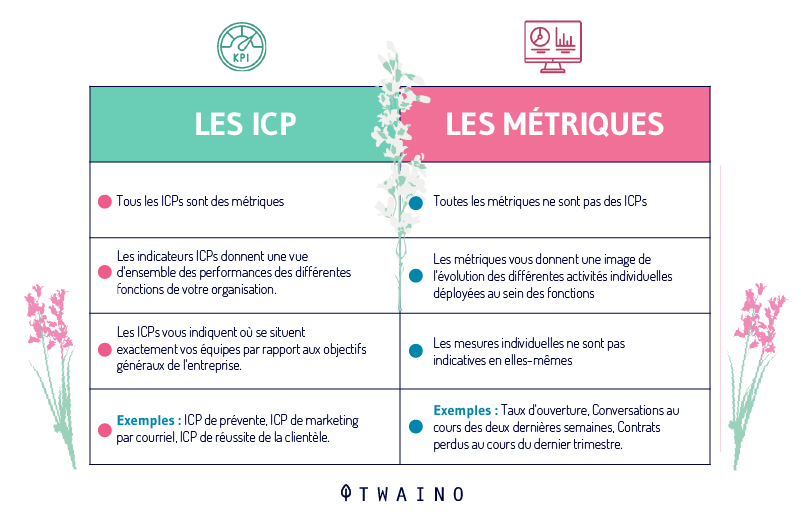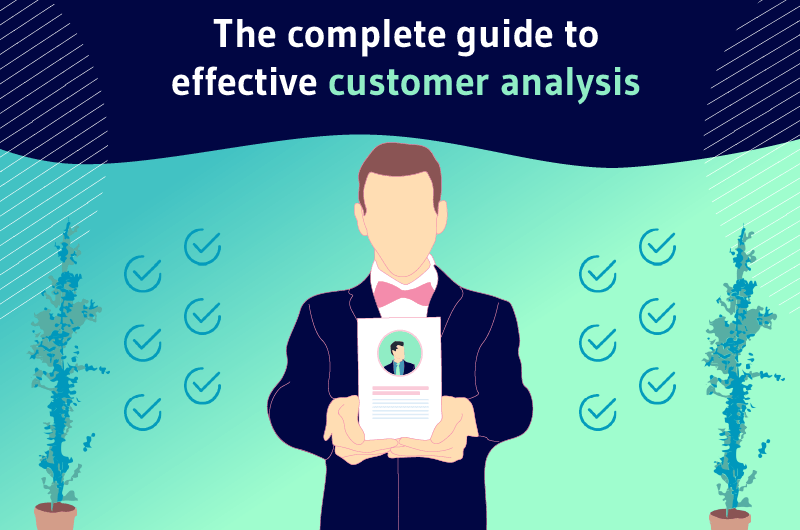Customer analytics is a key aspect for businesses wanting to excel in a competitive environment.
By understanding consumer motivations, behaviors and needs, businesses can adapt to changing market preferences, deliver superior products and services and maximize profitability.
This approach also helps build customer trust and loyalty, positioning the business for a successful future.
In this text, we will dissect most of the gray points on the subject.
What is customer analytics?
Customer analytics involves a careful examination of the wants, attitudes, aspirations and impulses of a company’s consumers. Its objective is to acquire a more in-depth understanding of customers in order to design items and services that meet their expectations.

This analysis focuses on collecting customer data through various sources, such as:
- Satisfaction surveys;
- Social media comments;
- Demographic data;
- And recent purchases.
The collected information is then used to develop detailed consumer profiles and market segments to improve business performance.
Indeed, customer analysis is crucial for businesses, because it helps develop a better understanding of customers, which can lead to improved customer satisfaction, an increase in sales which materializes in turnover and loyalty. increased.
Additionally, customer analytics can help businesses identify market opportunities, design targeted marketing campaigns, and improve production strategies to maximize efficiency and profitability.
Simply put, customer analytics is an important process that helps businesses better understand customers to improve their satisfaction and loyalty, as well as develop products and services that meet their needs.
What is the link between customer analysis and customer profile?
Customer analytics is a process of collecting, organizing and analyzing data about customers to better understand them.
While the customer profile is a set of information describing the characteristics, behaviors and preferences of a customer or group of customers.

The connection between customer analytics and customer profiling is that customer analytics provides the data needed to build customer profiles. Information collected from different sources such as transactions, surveys and social media can be used to create a detailed and accurate customer profile.
Identifying the customer profile is a key element for businesses keen to develop a deep understanding of their customer base. Indeed, by knowing the needs, expectations and habits of their customers, companies can adapt their product and service offering to better meet the expectations of their customers.
Customer analytics can also help businesses identify customer segments that have the greatest opportunities for growth or profitability.
By knowing the purchasing behaviors, preferences and expectations of these segments, companies can design specific marketing strategies to effectively reach them and retain their loyalty.
In a word, customer analytics and customer profiling are closely related and complementary. Customer analytics provides the data needed to build an accurate customer profile, which can then be used to improve customer understanding and tailor marketing strategies accordingly.
Why is it necessary to do a customer analysis?
There are several reasons why a customer analysis may be a must for any business with an online presence.
Know customer needs and expectations
Understanding customer motivations, purchasing behaviors and preferences is fundamental for companies that want to develop a fairly effective commercial strategy with their websites.
Indeed, companies that do not take into account the needs and expectations of their customers run the risk of losing their competitiveness in the market.

As we have already noted, customer analysis can be carried out using various techniques, such as surveys, market research, sales data and database data.
These methods allow companies to obtain information on the factors that motivate customers to act on their products and services.
They can also provide insights into customer purchasing behaviors, such as
- The frequency of purchase;
- The duration of purchasing cycles;
- And associated products or services.
By conducting analytics to understand customer motivations, purchasing behaviors and preferences, businesses can better match their services to their needs.
They can also develop targeted marketing strategies to reach the most profitable market segments.
Additionally, by providing personalized service and meeting the needs of their customer base, businesses can build customer loyalty.
Improve customer satisfaction level
Satisfied customers are more likely to make repeat purchases, recommend the company to others, and build brand loyalty.

This is why it is essential to identify the key factors that contribute to customer satisfaction and take the necessary steps to improve them.
Customer analytics can help businesses identify opportunities to improve customer satisfaction by collecting customer feedback and suggestions.
Businesses can also use sales data and satisfaction metrics to measure the effectiveness of their efforts to improve customer satisfaction.
By taking customer feedback into account, companies can adjust their offering to match the expectations of their markets. They can also improve their sales process to ensure a positive purchasing experience for customers.
Additionally, by reading customer reviews, businesses can develop trusting relationships with their customer base and strengthen brand loyalty.
It is important to note that customer analysis should not be a one-off activity, but an ongoing process.
Businesses must be open to customer feedback and be willing to adjust their strategy accordingly. This allows businesses to stay in step with the changing needs of their customers and ensure long-term customer satisfaction.
In other words, customer analytics is an essential way for businesses to measure and improve customer satisfaction. By taking customer feedback into account, businesses can develop superior products and services, strengthen customer loyalty, and improve their market place or position and potential.
Develop targeted marketing strategies
Customer analysis is a valuable tool for developing strategiesmarketing targeted solutions that meet the unique needs of your customers.
By understanding your customers’ motivations, purchasing behaviors, and preferences, you can develop marketing campaigns that grab their attention and entice them to make a purchase.
Businesses that use customer analytics to develop marketing strategies can leverage market intelligence to better understand their customers and speak to them more effectively. They can also use demographic data to target specific groups of customers and develop marketing campaigns that reach them.

Customer analytics can also allow companies to identify the best and most effective marketing channels to reach their customers.
For example, if your business’s customers are primarily active on social media, it might make sense to focus your marketing efforts on those channels.
Customer analytics can also help businesses optimize their marketing budget.
By understanding their customer preferences, businesses can determine which products and services are most successful with their customer base and invest in marketing strategies that have maximum impact.
By using customer analytics to develop targeted marketing strategies, businesses can maximize their marketing ROI and attract new customers effectively. They can also retain their existing customers by responding adequately to their needs and expectations.
So, by using customer data to target marketing campaigns, businesses can improve their marketing ROI and develop a loyal, satisfied customer base.
Strengthen customer loyalty
Strengthening customer loyalty is a key issue for companies seeking to build a strong and lasting customer base. Customer analytics can play a crucial role in this process by helping businesses better understand the motivations, purchasing behaviors and preferences of their customers.

By using this data to develop targeted marketing strategies, businesses can offer products and services that meet the unique needs of their customer base. This can help them build a trusting relationship with their customers, which can strengthen long-term loyalty.
Additionally, customer analytics can help businesses improve customer experience by identifying opportunities to provide better quality of service.
This can include resolving issues quickly, personalizing interactions with customers, and providing additional resources to help them find the products and services that are right for them.
By using customer analytics to improve customer satisfaction, businesses can also benefit from a positive reputation that can help them attract new customers.
This is because satisfied customers can speak positively about their experience with a company, which can build trust in the brand and encourage others to do business with it.
Additionally, customer analytics can help businesses measure the impact of their efforts to strengthen customer loyalty. By using metrics to monitor loyalty and satisfaction rates, businesses can evaluate the effectiveness of their strategies and make changes to achieve more satisfying results.
Make informed decisions
Customer analytics is a key element for making informed decisions in product development, marketing strategy and customer relationship management.
It allows you to collect detailed data on the behaviors, motivations and expectations of your current and potential customers, giving you a better understanding of what they are looking for and how you can satisfy them.
By using this information, you can better target your marketing efforts, offer relevant products and services, and improve the overall customer experience.
Customer analytics can also help you identify differentiation opportunities in the market to aid future decisions.
Additionally, by closely monitoring market trends and customer feedback, you can predict changes in consumer needs and expectations and thus make decisions that maintain or improve your position in the market.
In short, comprehensive and regular customer analysis allows you to improve decision-making in your business and maximize growth opportunities.
5 steps to do a successful customer analysis
Here are the different steps for you to carry out a fairly effective customer analysis:
1. Collection of customer data
Collecting consumer information is of paramount importance to understand the aspirations, expectations and habits of your customers. This step involves gathering valuable information that will help you better understand your target audience and develop effective strategies to meet their expectations.

The first thing to do when it comes to collecting customer data is to target the information that matters most.
Purchasing habits can include the types of products and services purchased, purchasing frequencies, and purchasing channels used.
And as for customer preferences, they can include preferred brands, colors, and styles.
To collect this information, you can use a variety of methods, such as polls, surveys, and customer interviews.
Data may also be collected from sources such as social media accounts, sales tracking systems, and marketing databases.
You must therefore ensure that the data collected is accurate in order to be able to obtain relevant insights.
Finally, collecting customer data is a crucial step in better understanding the needs and behaviors of your customers.
By using the collected data effectively, you can develop strategies to improve customer experience and increase loyalty.
2. Customer Segmentation
Dividing customers into distinct segments is a crucial component of customer research, which helps group consumers based on similar traits and purchasing habits.

This step helps you understand the differences and similarities between customers, which is crucial for developing targeted and effective marketing strategies.
Customer segmentation can be based on different criteria, such as demographics as well as online consumer attitudes.
You can also segment customers based on their shopping habits, such as shopping frequencies and shopping channels used.
The goal of customer segmentation is to understand the differences and similarities between customer groups, which can help you determine the unique needs and expectations of each group.
It can also help you identify opportunities to improve customer experiences and develop products and services that meet the needs of each customer segment.
By using customer segmentation effectively, you can target marketing messages, products and services to each customer segment. This allows you to use your marketing budget more efficiently and maximize results.
It is also important to note that customer segmentation is not an entirely static process. Over time, customer behaviors may change, so it’s important to continue collecting data and updating customer segmentation accordingly.
So, customer segmentation is a key step to understanding the needs and behaviors of your customers.
By using segmentation effectively, you can develop targeted marketing strategies and maximize results for your business.
3. Data analysis
This step involves using analytics tools to explore the collected data and discover trends and patterns that can help understand customer behaviors and preferences.

Data analysis can be done using different tools and techniques, such as metrics in a dashboard, descriptive statistics, predictive models, and estimations.
Descriptive statistics helps describe data and measure trends such as the mean, variance, and distribution of data.
As for predictive models, they can be used to predict future customer behaviors.
Rigorous data analysis allows you to uncover valuable insights about your customers and make informed decisions that can make all the difference to your business.
For example, you can determine customer consumption trends, the most frequent purchasing behaviors, and the most popular or consumed products.
You can also use data to understand the factors that influence customer purchasing behaviors, such as price, quality, geographic proximity, and brand attitudes.
Using the insights gained from data analysis, you can develop targeted marketing strategies to reach and retain customers.
You can also use data to improve customer experiences, develop new products and services, and optimize operations to maximize results for your business.
4. Strategizing
Strategizing is the key step to convert insights obtained from data analysis into concrete actions. It’s about determining how businesses can improve the customer experience and build brand loyalty.
This step involves implementing different tactics to achieve these objectives such as:
- Optimization of the customer journey;
- Personalization of the purchasing experience;
- The creation of loyalty programs;
- Online reputation management;
- Etc.

The end goal is to identify opportunities to improve customer interactions and the experiences they have with your business, while increasing their engagement and loyalty to your brand.
Developing effective strategies requires a deep understanding of trends and patterns observed in data, as well as in-depth knowledge of customer preferences and purchasing habits.
5. Measuring results
Evaluating results is an essential aspect of judging the performance of your customer marketing tactics. This step gives you the opportunity to see if you have achieved your goals, calculate the return on investment and discover ways to optimize your efforts.

To measure the results of your customer analysis, it is important to use relevant indicators that reflect the objectives of your strategy.
Relevant metrics may include customer loyalty, conversion rate, average order value, customer satisfaction, retention rate and brand loyalty.
Using these metrics, you can monitor trends and variances in your website’s performance, allowing you to understand why your strategies are succeeding or failing.
You can also use these metrics to identify opportunities for improvement and to determine what adjustments are necessary to achieve your goals.
In other words, measuring results is a key element in evaluating the success of your customer analysis. By using relevant metrics and monitoring trends and performance gaps, you can identify opportunities for improvement and achieve your customer marketing goals.
Conclusion
Customer analytics is crucial to business success.
It provides an in-depth understanding of consumer needs, motivations and behaviors, enabling businesses to:
- to better target their marketing,
- to develop more relevant products
- and maximize customer satisfaction.
In short, customer analytics is an investment that can lead to sustainable growth, increased customer loyalty, and improved brand reputation.



